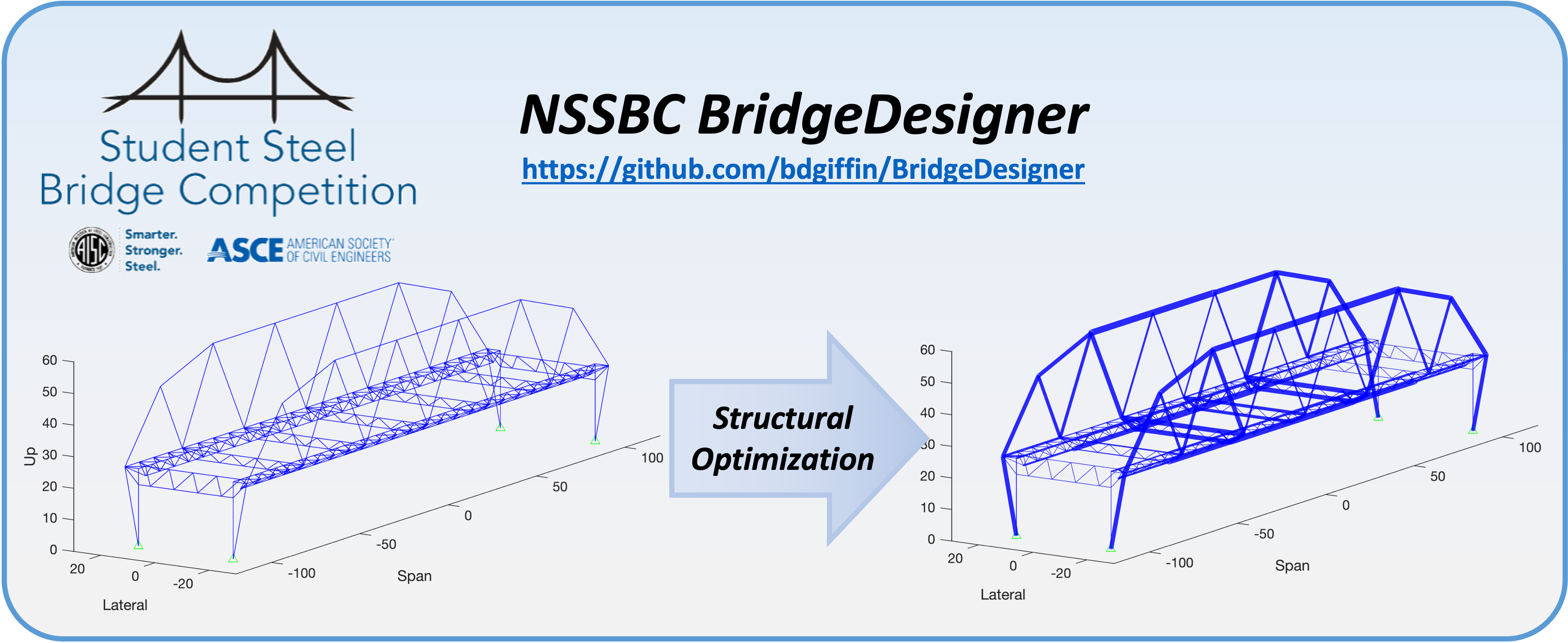National Student Steel Bridge Competition resources
Educational videos and tools directed at students participating in the NSSBC
I have a long history of involvement in the National Student Steel Bridge Competition (NSSBC), as a student, as a regional competition judge, and now as a faculty advisor to the Steel Bridge team at OSU. Over the years, I have created a number of educational materials and tools directed at students participating in the NSSBC, including an introductory series of NSSBC Design Tutorials.

Additionally, I developed the NSSBC BridgeDesigner structural optimization tool. BridgeDesigner may be viewed as the culmination of previous CAD-to-analysis automation efforts, packaged within an open-source structural analysis and optimization framework, and requiring only that students have access to MATLAB. Providing students with access to these tools achieves a broad range of educational objectives:
- To minimize the amount of time students spend performing tedious model setup and data processing tasks, giving teams more time to explore innovative alternative design ideas.
- To create a tighter feedback loop between the drafting phase and the structural performance evaluation phase of the iterative design process, enhancing students’ intuition and understanding of how various modifications to the design will result in better or worse structural performance.
- To maximize the number of student team members who wish to participate in the design phase of the project, requiring relatively limited prior knowledge of structural analysis or the NSSBC rules, and enabling consistent quantitative comparisons between candidate designs produced by different students.
- To provide students with a transparent window to see how common structural analysis software tools work “under the hood,” and to give students the ability to modify or expand upon these capabilities while enhancing their computer programming literacy and their knowledge of structural analysis.
- To generate increased student interest and awareness of structural optimization and applied mathematics, demonstrating the utility of these fields of study in efficiently solving practical engineering design problems.
- To level the playing field between larger/established teams and smaller/burgeoning teams participating at different universities across the country.